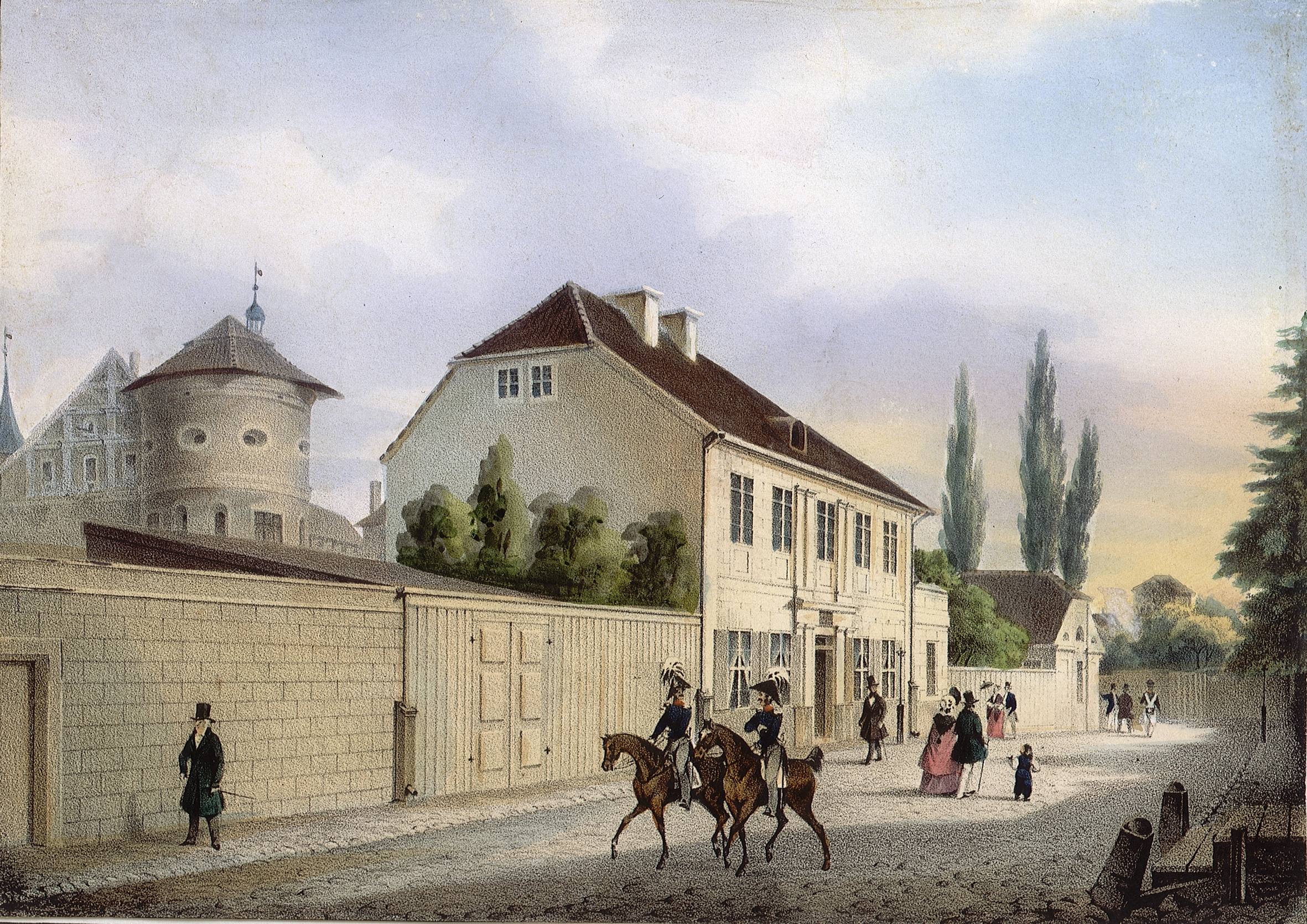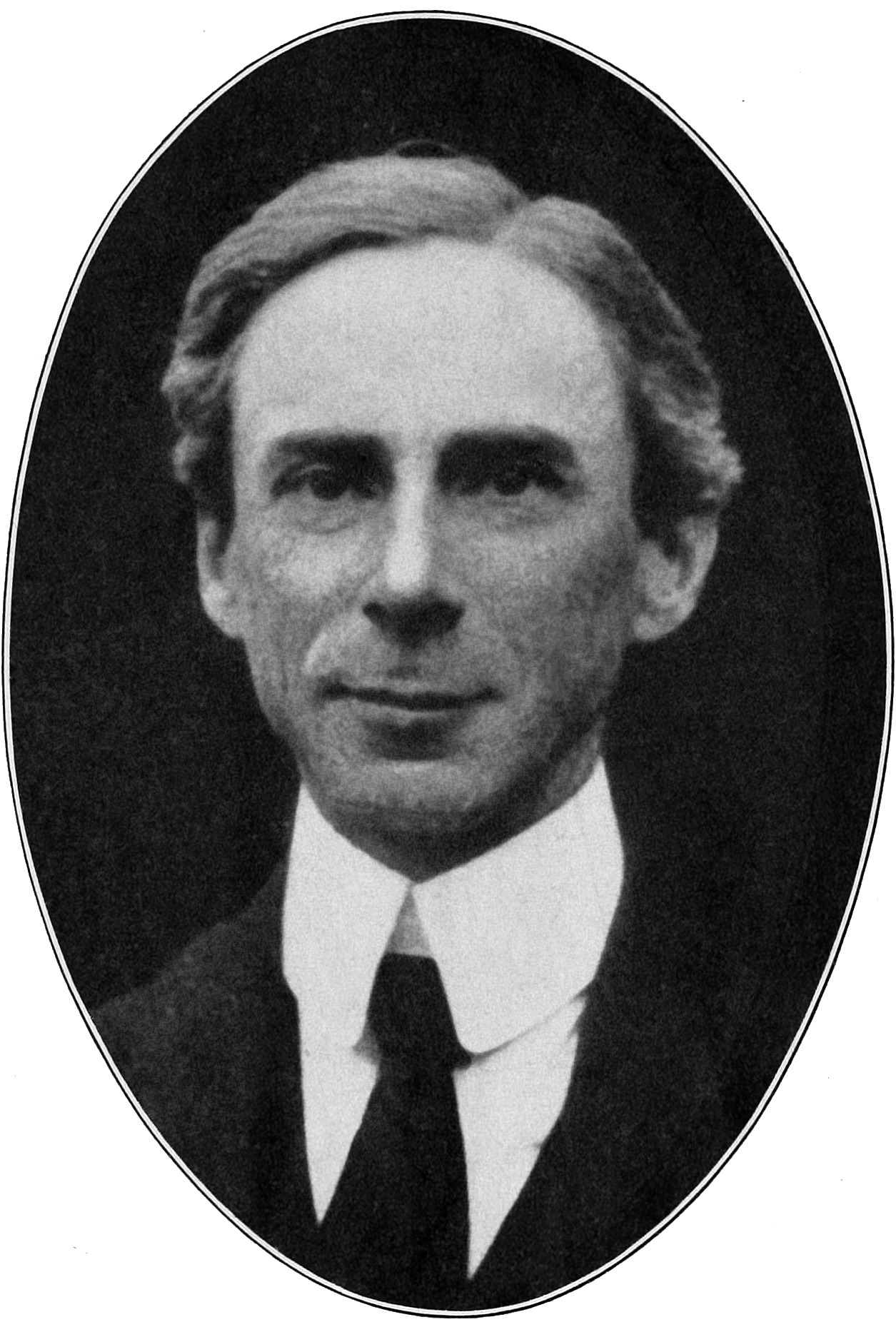|
Tractatus Logico-Philosophicus
The ''Tractatus Logico-Philosophicus'' (widely abbreviated and Citation, cited as TLP) is the only book-length philosophical work by the Austrian philosopher Ludwig Wittgenstein that was published during his lifetime. The project had a broad goal: to identify the relationship between language and reality, and to define the limits of science. Wittgenstein wrote the notes for the ''Tractatus'' while he was a soldier during World War I and completed it during a military leave in the summer of 1918. It was originally published in German in 1921 as ''Logisch-Philosophische Abhandlung'' (Logical-Philosophical Treatise). In 1922 it was published together with an English translation and a Latin title, which was suggested by G. E. Moore as homage to Baruch Spinoza's ''Tractatus Theologico-Politicus'' (1670). The ''Tractatus'' is written in an austere and succinct literary style, containing almost no arguments as such, but consists of 525 declarative statements altogether, which are hierarc ... [...More Info...] [...Related Items...] OR: [Wikipedia] [Google] [Baidu] |
Ludwig Wittgenstein
Ludwig Josef Johann Wittgenstein ( ; ; 26 April 1889 – 29 April 1951) was an Austrian philosopher who worked primarily in logic, the philosophy of mathematics, the philosophy of mind, and the philosophy of language. From 1929 to 1947, Wittgenstein taught at the University of Cambridge. Despite his position, only one book of his philosophy was published during his entire life: the 75-page ''Logisch-Philosophische Abhandlung'' (''Logical-Philosophical Treatise'', 1921), which appeared, together with an English translation, in 1922 under the Latin title ''Tractatus Logico-Philosophicus''. His only other published works were an article, "Some Remarks on Logical Form" (1929); a book review; and a children's dictionary. #Works, His voluminous manuscripts were edited and published posthumously. The first and best-known of this posthumous series is the 1953 book ''Philosophical Investigations''. A 1999 survey among American university and college teachers ranked the ''Investigations ... [...More Info...] [...Related Items...] OR: [Wikipedia] [Google] [Baidu] |
Philosophical Investigations
''Philosophical Investigations'' () is a work by the philosopher Ludwig Wittgenstein, published posthumously in 1953. ''Philosophical Investigations'' is divided into two parts, consisting of what Wittgenstein calls, in the preface, ''Bemerkungen'', translated by G. E. M. Anscombe as "remarks". A survey among American university and college teachers ranked the ''Investigations'' as the most important book of 20th-century philosophy. Relation to Wittgenstein's body of work In its preface, Wittgenstein says that ''Philosophical Investigations'' can "be seen in the right light only by contrast with and against the background of my older way of thinking". Wittgenstein biographer Ray Monk writes, "This is partly because of the great differences between his early and late work, but also because of the equally important continuities between the two". The early work in which Wittgenstein expressed his "older way of thinking" is the only book Wittgenstein published in his lifeti ... [...More Info...] [...Related Items...] OR: [Wikipedia] [Google] [Baidu] |
Atomic Fact
In logic and analytic philosophy, an atomic sentence is a type of declarative sentence which is either true or false (may also be referred to as a proposition, statement or truthbearer) and which cannot be broken down into other simpler sentences. For example, "The dog ran" is atomic whereas "The dog ran and the cat hid" is molecular in natural language. From a logical analysis point of view, the truth of a sentence is determined by only two things: * the logical form of the sentence. * the truth of its underlying atomic sentences. That is to say, for example, that the truth of the sentence "John is Greek and John is happy" is a function of the meaning of " and", and the truth values of the atomic sentences "John is Greek" and "John is happy". However, the truth of an atomic sentence is not a matter that is within the scope of logic itself, but rather whatever art or science the content of the atomic sentence happens to be talking about. Logic has developed artificial languages ... [...More Info...] [...Related Items...] OR: [Wikipedia] [Google] [Baidu] |
Picture Theory Of Language
The picture theory of language, also known as the picture theory of meaning, is a theory of linguistic reference and meaning articulated by Ludwig Wittgenstein in the ''Tractatus Logico-Philosophicus''. Wittgenstein suggested that a meaningful proposition pictured a state of affairs or atomic fact. Wittgenstein compared the concept of logical pictures () with spatial pictures. The picture theory of language is considered a correspondence theory of truth. Wittgenstein claims there is an unbridgeable gap between what can be expressed in language and what can only be expressed in non-verbal ways. The picture theory of meaning states that statements are meaningful if, and only if, they can be defined or pictured in the real world. Wittgenstein's later investigations laid out in the First Part of ''Philosophical Investigations'' refuted and replaced his earlier picture-based theory with a use theory of meaning. However, the second psychology-focused Part of ''Philosophical Investigat ... [...More Info...] [...Related Items...] OR: [Wikipedia] [Google] [Baidu] |
Immanuel Kant
Immanuel Kant (born Emanuel Kant; 22 April 1724 – 12 February 1804) was a German Philosophy, philosopher and one of the central Age of Enlightenment, Enlightenment thinkers. Born in Königsberg, Kant's comprehensive and systematic works in epistemology, metaphysics, ethics, and aesthetics have made him one of the most influential and highly discussed figures in modern Western philosophy. In his doctrine of transcendental idealism, Kant argued that space and time are mere "forms of intuition" that structure all experience and that the objects of experience are mere "appearances". The nature of things as they are in themselves is unknowable to us. Nonetheless, in an attempt to counter the philosophical doctrine of Philosophical skepticism, skepticism, he wrote the ''Critique of Pure Reason'' (1781/1787), his best-known work. Kant drew a parallel to the Copernican Revolution#Immanuel Kant, Copernican Revolution in his proposal to think of the objects of experience as confo ... [...More Info...] [...Related Items...] OR: [Wikipedia] [Google] [Baidu] |
Heraclitus
Heraclitus (; ; ) was an Ancient Greece, ancient Greek Pre-Socratic philosophy, pre-Socratic philosopher from the city of Ephesus, which was then part of the Achaemenid Empire, Persian Empire. He exerts a wide influence on Western philosophy, both Ancient philosophy, ancient and Modern philosophy, modern, through the works of such authors as Plato, Aristotle, Georg Wilhelm Friedrich Hegel, Hegel, Friedrich Nietzsche, Nietzsche, and Martin Heidegger, Heidegger. Little is known of Heraclitus's life. He wrote a single work, only Literary fragment, fragments of which have survived. Even in ancient times, his Paradox#In philosophy, paradoxical philosophy, appreciation for Word play, wordplay, and cryptic, oracular epigrams earned him the epithets "the dark" and "the obscure". He was considered arrogant and depressed, a Misanthropy, misanthrope who was subject to melancholia. Consequently, he became known as "the weeping philosopher" in contrast to the ancient ancient atomism, atom ... [...More Info...] [...Related Items...] OR: [Wikipedia] [Google] [Baidu] |
Aristotle
Aristotle (; 384–322 BC) was an Ancient Greek philosophy, Ancient Greek philosopher and polymath. His writings cover a broad range of subjects spanning the natural sciences, philosophy, linguistics, economics, politics, psychology, and the arts. As the founder of the Peripatetic school of philosophy in the Lyceum (classical), Lyceum in Athens, he began the wider Aristotelianism, Aristotelian tradition that followed, which set the groundwork for the development of modern science. Little is known about Aristotle's life. He was born in the city of Stagira (ancient city), Stagira in northern Greece during the Classical Greece, Classical period. His father, Nicomachus (father of Aristotle), Nicomachus, died when Aristotle was a child, and he was brought up by a guardian. At around eighteen years old, he joined Plato's Platonic Academy, Academy in Athens and remained there until the age of thirty seven (). Shortly after Plato died, Aristotle left Athens and, at the request ... [...More Info...] [...Related Items...] OR: [Wikipedia] [Google] [Baidu] |
Plato
Plato ( ; Greek language, Greek: , ; born BC, died 348/347 BC) was an ancient Greek philosopher of the Classical Greece, Classical period who is considered a foundational thinker in Western philosophy and an innovator of the written dialogue and dialectic forms. He influenced all the major areas of theoretical philosophy and practical philosophy, and was the founder of the Platonic Academy, a philosophical school in History of Athens, Athens where Plato taught the doctrines that would later become known as Platonism. Plato's most famous contribution is the theory of forms, theory of forms (or ideas), which aims to solve what is now known as the problem of universals. He was influenced by the pre-Socratic thinkers Pythagoras, Heraclitus, and Parmenides, although much of what is known about them is derived from Plato himself. Along with his teacher Socrates, and his student Aristotle, Plato is a central figure in the history of Western philosophy. Plato's complete ... [...More Info...] [...Related Items...] OR: [Wikipedia] [Google] [Baidu] |
Platonic Form
The Theory of Forms or Theory of Ideas, also known as Platonic idealism or Platonic realism, is a philosophical theory credited to the Classical Greek philosopher Plato. A major concept in metaphysics, the theory suggests that the physical world is not as real or true as Forms. According to this theory, Forms—conventionally capitalized and also commonly translated as Ideas—are the timeless, absolute, non-physical, and unchangeable essences of all things, which objects and matter in the physical world merely participate in, imitate, or resemble. In other words, Forms are various abstract ideals that exist even outside of human minds and that constitute the basis of reality. Thus, Plato's Theory of Forms is a type of philosophical realism, asserting that certain ideas are literally real, and a type of idealism, asserting that reality is fundamentally composed of ideas, or abstract objects. Plato describes these entities only through the characters (primarily Socrates) in h ... [...More Info...] [...Related Items...] OR: [Wikipedia] [Google] [Baidu] |
Epistemology
Epistemology is the branch of philosophy that examines the nature, origin, and limits of knowledge. Also called "the theory of knowledge", it explores different types of knowledge, such as propositional knowledge about facts, practical knowledge in the form of skills, and knowledge by acquaintance as a familiarity through experience. Epistemologists study the concepts of belief, truth, and justification to understand the nature of knowledge. To discover how knowledge arises, they investigate sources of justification, such as perception, introspection, memory, reason, and testimony. The school of skepticism questions the human ability to attain knowledge while fallibilism says that knowledge is never certain. Empiricists hold that all knowledge comes from sense experience, whereas rationalists believe that some knowledge does not depend on it. Coherentists argue that a belief is justified if it coheres with other beliefs. Foundationalists, by contrast, maintain th ... [...More Info...] [...Related Items...] OR: [Wikipedia] [Google] [Baidu] |
Truth Function
In logic, a truth function is a function that accepts truth values as input and produces a unique truth value as output. In other words: the input and output of a truth function are all truth values; a truth function will always output exactly one truth value, and inputting the same truth value(s) will always output the same truth value. The typical example is in propositional logic, wherein a compound statement is constructed using individual statements connected by logical connectives; if the truth value of the compound statement is entirely determined by the truth value(s) of the constituent statement(s), the compound statement is called a truth function, and any logical connectives used are said to be truth functional. Classical propositional logic is a truth-functional logic, in that every statement has exactly one truth value which is either true or false, and every logical connective is truth functional (with a correspondent truth table), thus every compound statement is ... [...More Info...] [...Related Items...] OR: [Wikipedia] [Google] [Baidu] |






